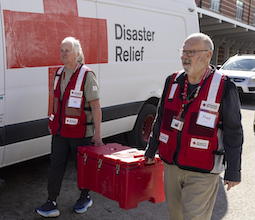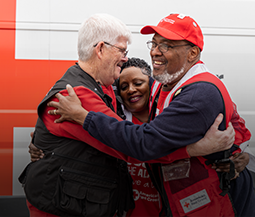Some of our disaster relief and recovery work is very visible: hospitals and clinics (we funded more than 50), schools (we renovated or reconstructed more than 40), and housing (we helped more than 164,800 people through safe housing and neighborhood recovery).
Other parts of American Red Cross’s work are less visible—but just as critical. These include providing 70% of the funds needed for the country’s first cholera vaccine campaign; engaging the community in decision-making; granting seed money to entrepreneurs; and training disaster responders so they can keep their neighbors safe during future emergencies.
Recent civil unrest in Haiti has resulted in economic stagnation, insecurity, and shortages of social services and medical care. Large investments in Haiti after the earthquake have helped build resilience, yet families face challenges more complex than disaster recovery alone. In response to the civil unrest, the Haitian Red Cross is providing first aid and transporting injured people to medical facilities via ambulance. The American Red Cross has made financial contributions towards these efforts to help the Haitian Red Cross strengthen its capacity to respond to this and other crises.























